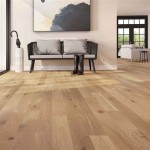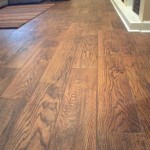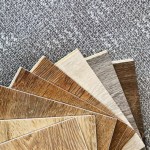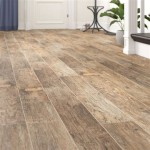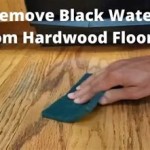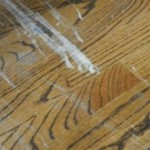Different Types of Wood Flooring in a House
Wood flooring remains a popular choice for homeowners, offering a timeless elegance and durability that adds value and warmth to any space. However, with so many types of wood flooring available, choosing the right option for your home can feel daunting. This article provides a comprehensive guide to different types of wood flooring, exploring their unique characteristics, aesthetics, and considerations.
Solid Hardwood Flooring
Solid hardwood flooring is crafted from a single piece of timber, typically 3/4 inch thick. It offers unparalleled durability and longevity, making it a wise investment for high-traffic areas. Solid hardwood flooring comes in a wide range of wood species, each with a distinctive grain pattern, color, and hardness rating. Popular options include oak, maple, cherry, walnut, and hickory. Due to its thickness, solid hardwood can be refinished multiple times, extending its lifespan.
Solid hardwood is installed using a nail-down or glue-down method. Nail-down installation requires nailing the planks to the subfloor, while glue-down involves adhering the planks to a moisture-resistant underlayment. The choice between these methods depends on the subfloor condition, site-specific requirements, and personal preferences.
Advantages of solid hardwood flooring include:
- Exceptional durability and longevity
- Refishable multiple times, extending its lifespan
- Wide variety of wood species and finishes
- Adds value to a home
Disadvantages of solid hardwood flooring include:
- Higher cost compared to engineered hardwood
- Requires professional installation
- Can be susceptible to moisture damage
Engineered Hardwood Flooring
Engineered hardwood flooring combines a thin layer of real hardwood veneer with a plywood or HDF core. This construction provides stability and dimensional stability, making it suitable for use in various environments, including basements and areas with fluctuating humidity. Engineered hardwood flooring comes in various thicknesses, typically ranging from 3/8 to 1/2 inch.
Engineered hardwood flooring is available in various wood species and finishes, offering a wide range of aesthetic options to complement different interior designs. It can be installed using a click-lock system or with a glue-down method. The click-lock system allows for faster and easier installation, making it a DIY-friendly option.
Advantages of engineered hardwood flooring include:
- More dimensional stability than solid hardwood
- Suitable for use in basements and areas with fluctuating humidity
- Easier to install than solid hardwood
- More affordable than solid hardwood
Disadvantages of engineered hardwood flooring include:
- Limited refinishing options compared to solid hardwood
- May not be as durable as solid hardwood
- Can be more susceptible to scratches and dents
Bamboo Flooring
Bamboo flooring is an eco-friendly alternative to traditional hardwood flooring. It is made from rapidly growing bamboo plants, offering a sustainable and renewable resource. Bamboo flooring is known for its hardness, durability, and natural beauty. It comes in various shades, from light blonde to rich brown, and can be finished with various stains and varnishes.
Bamboo flooring is available in two primary types: strand woven and horizontally laminated. Strand woven bamboo is the denser and more durable option, while horizontally laminated bamboo is more affordable and easier to install. Both types are available in various styles and colors.
Advantages of bamboo flooring include:
- Sustainable and renewable resource
- Durable and hard-wearing
- Unique and aesthetically pleasing
- Available in various styles and colors
Disadvantages of bamboo flooring include:
- May be more susceptible to moisture damage than hardwood
- Can be more expensive than engineered hardwood
- Limited refinishing options
Other Wood Flooring Options
Besides solid hardwood, engineered hardwood, and bamboo flooring, other wood flooring options are available, including:
Reclaimed wood flooring is made from salvaged wood from old buildings, barns, and other structures. It offers a unique and rustic aesthetic and a sustainable alternative to new wood flooring.
Cork flooring is made from the bark of the cork oak tree. It is a naturally soft and resilient material, known for its sound-absorbing properties and comfort underfoot.
Wood laminate flooring is a synthetic material that mimics the look of real wood. It is typically more affordable than real wood flooring, but it is not as durable or environmentally friendly.
Choosing the right type of wood flooring for your home depends on your budget, lifestyle, and aesthetic preferences. Considering factors such as durability, refinishing options, and environmental impact can help you make an informed decision that meets your needs.

Types Of Hardwood Floors The Home

Wood Floors Ten Most Common Types Of Gemini Floor Services

Engineered Wood Flooring Vs Diffe Types Hardwoodfloor

11 Types Of Flooring That Will Upgrade Your Home Instantly Colibri Real Estate

Hardwood Flooring Types Installation Cleaning Supreme

What Are The Diffe Types Of Wood Flooring Invision Hardwood

4 Types Of Hardwood Floors For Your Home

Types Of Flooring How To Choose The Best Floor Poetry Homes

The Best Wood Flooring For Living Rooms Ted Todd Fine Floors

Diffe Types Of Plank Flooring Collins Builders Blog
See Also
